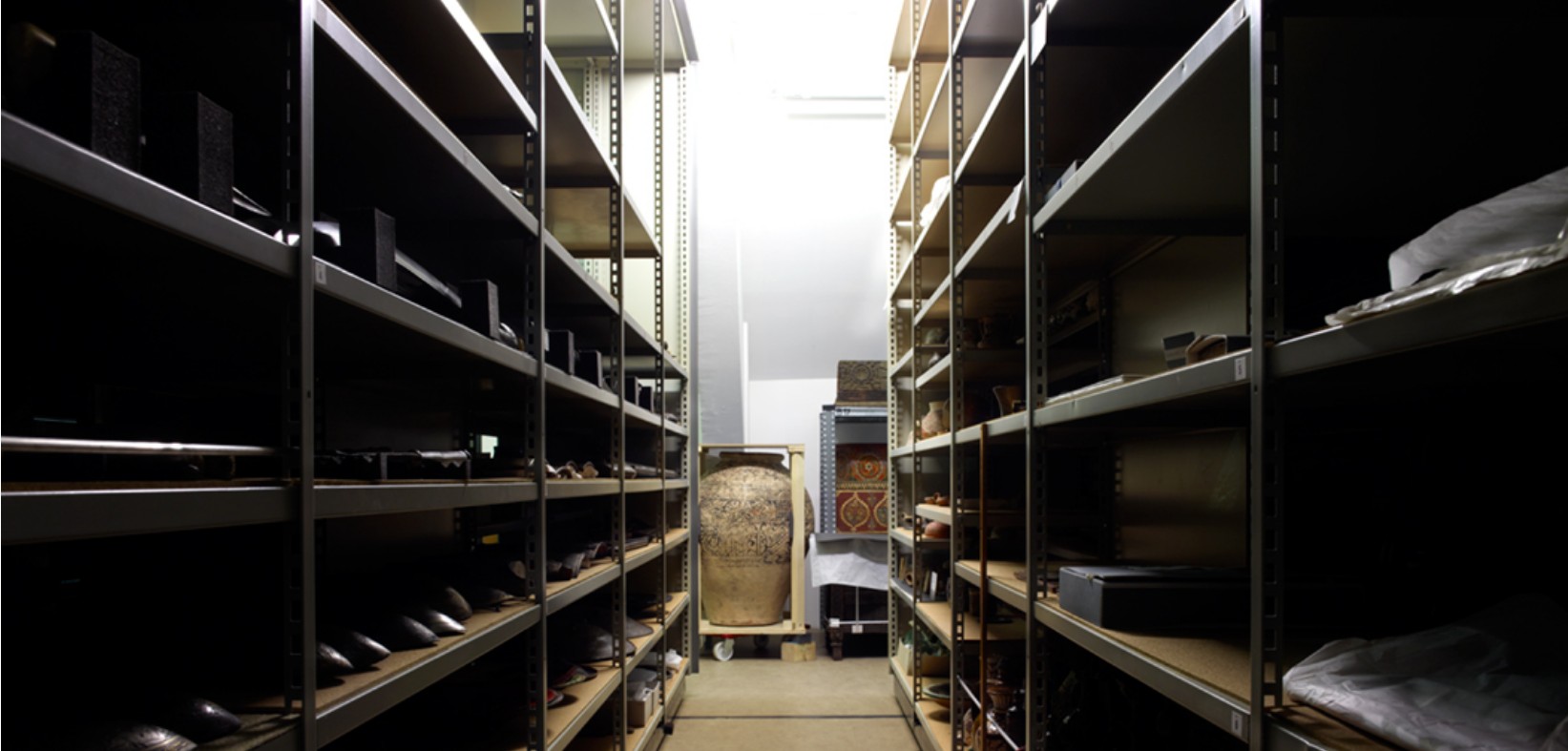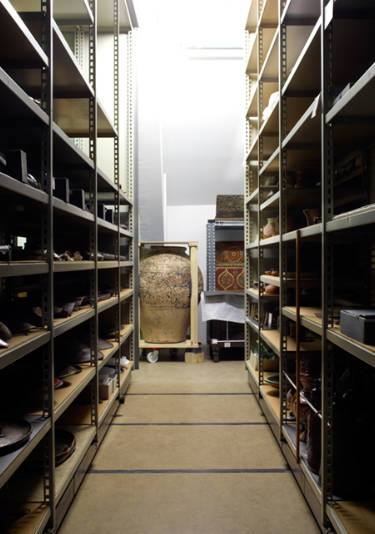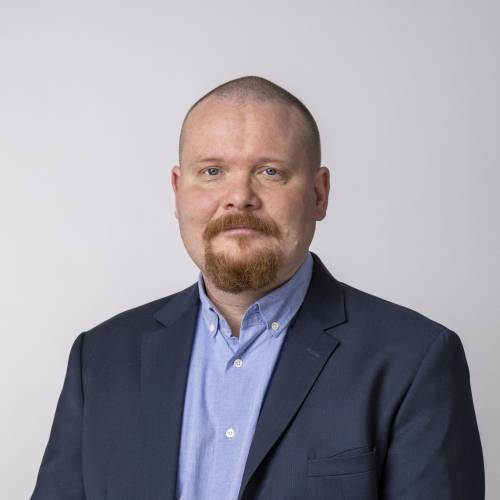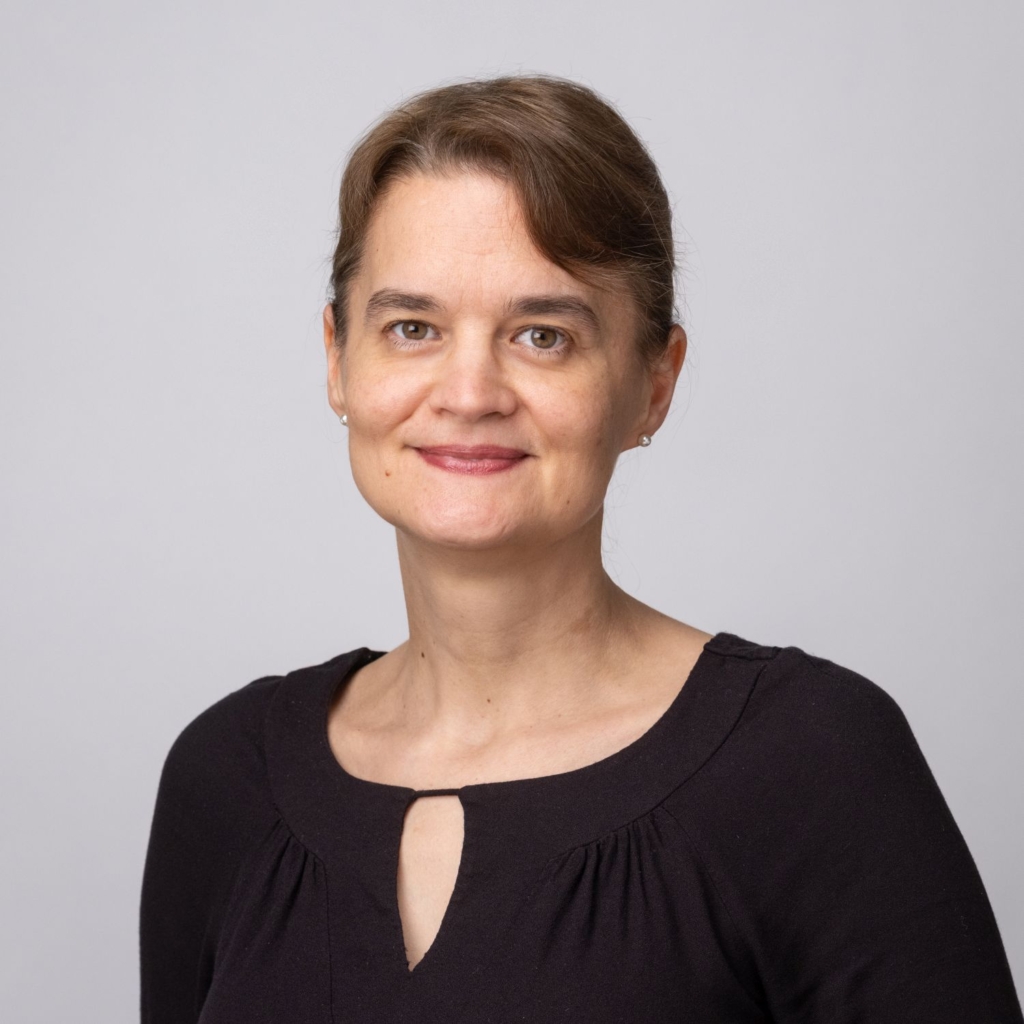Startseite > Collections


With around 160,000 everyday objects, works of art and sacred objects from Africa, the Americas, Asia, Australia and Oceania, the Linden Museum is home to one of the largest ethnological collections in Europe. In addition, the collection also includes photographic media and archival materials.
The following articles on the regional collections provide information on the focal points, origins and current strategies of collecting.
The collections cared for by the “Orient” department comprise approximately 15,000 objects. Established in 1974, the department’s collections and acquisitions cover North Africa, West and Central Asia, and parts of South Asia. These are areas that were reached, conquered, and at least partially Islamized by Arab-Muslim armies as early as the 7th and 8th century. Today’s nation-states are also inhabited by Muslims, often in the majority, and there is an awareness of shared history, languages, cultural influences, and relationships – up to and including the question of independence from European powers and states in the 20th century.
The term “Orient” (as well as “Oriental Studies”), which is still frequently used for this region and the academic subject in this context, and the Eurocentric perspective associated with it are increasingly being critically questioned today.
The department also oversees collections from North Asia (“Siberia”).
Before the founding of the Linden-Museum and in its early years, collections of objects from Egypt, later Turkey, Syria, Palestine, Northwest Africa, and the Arabian Peninsula were acquired. In the case of Egypt, interest was particularly focused on ancient Egypt. The collection still includes a collection of the oldest shadow puppets in the Islamic world. Most of the (ancient) Egyptiaca were later given away and are now in Tübingen.
At the end of the 19th and the beginning of the 20th century, Germany tried to gain political and especially economic influence in Northwest Africa. During this period, the museum received collections of everyday objects and bazaar goods, some jewelry, and weapons from the region.
Julius Euting (1839-1913), who became known as the “Swabian Orient Explorer”, donated to the Linden-Museum his collection, some of which had been lost, which included contemporary everyday objects as well as jewelry, weapons, and numerous textiles. Euting had acquired these objects during his travels, which took him, among other places, to the Arabian Peninsula.
The Linden-Museum also has larger collections of the old holdings from Siberia (two Sakha collections).
From the First World War until the early 1950s, the holdings grew to a comparatively small extent. Since the mid-1950s, new objects have been acquired in a more targeted manner. Friedrich Kussmaul, who was responsible for the Asia department at the time, focused the collection on “Inner Asia, the Iranian region in its historical depth and nomadic cultures” in accordance with his research interests.
He initiated and led the Stuttgart Badakhshan Expedition (SBE), the largest research trip of the Linden-Museum (1962/63). Together with the collection of the German Hindukush Expedition, these expedition holdings form the largest and scientifically most important collection of the department.
From the 1970s to the 1990s, several large collections were acquired through the art trade. State art funds became available for acquisitions in 1974. The problematic provenance of many collections has only been addressed in recent years.
In the 1970s and 1980s, Prof. Kalter, who was responsible for the Orient department, also undertook “collecting trips,” for example to Morocco in 1977 and to Iran, Afghanistan, and Pakistan in 1978.
Acquisitions were often made in preparation for exhibitions. In particular, purchases were made in preparation for the permanent exhibition that opened in the mid-1980s, including collection items on the theme of “religion” – such as Koran manuscripts or book art.
Other undocumented anthropological collections (mainly textiles, jewelry, household objects) were also acquired through the art trade, for example from Syria or Central Asia. Provenance is difficult to determine in these cases.
In recent years, useful additions to existing collections have been purchased or accepted as gifts. These collections are mostly privately owned and are characterized by good documentation and the added value of collection-related histories and memories. Increased co-collection, for example with regard to Central Asia (Uzbekistan), is a central concern of the department.
The collections of the Africa Department currently comprise some 40,000 objects. Although the collections have been continuously expanded and deepened throughout the museum’s history, and new acquisitions and donations are made every year, the German colonial period with its trade, missionary and war activities has left its mark on them. This is particularly evident in the relatively large colonial collections from Cameroon, Congo, Tanzania, Namibia, and Togo. Like all of the Linden-Museum’s collections, however, the Africa Department suffered losses due to war damage or sales and levies prior to the introduction of state administration in 1973.
The collection is continually being added to by new and contemporary art and cultural objects, and includes a wide range of urban and rural everyday objects, artistically designed prestige objects, cultically significant tools, examples of souvenir art, modern works of art, and much more. Some of the research and collecting emphases testify to the Linden-Museum’s long association with communities and institutions in Africa, such as the Kingdom of Oku in the Cameroon Grasslands. The exchange between the Africa Department and Oku was established in the 1970s by the then head of the department, Hans-Joachim Koloss, and continues to this day.
With the exception of North Africa, all regions of the continent are represented in the Linden-Museum’s African collections. This has to do with the fact that countries such as Libya, Morocco, Algeria or Tunisia can be assigned to Africa according to geographical criteria, but also to the Orient according to cultural-historical criteria (Islamization). At the Linden Museum, they are the responsibility of the Orient Department.
Contemporary Perspectives: Polyphony, Cooperation, and Restitution Polyphony and cooperation between the Linden-Museum, internationally networked researchers and artists in and from Africa and the African diaspora characterize the current and future collection and exhibition activities of the department and tell of the inter- and transnational relations of African actors with Baden-Württemberg, Europe and the world.
For some years now, restitutions (e.g. objects from the Benin Kingdom to Nigeria in 2022, Bible and whip by Hendrik Witbooi to Namibia in 2019) have been just as important as new acquisitions: The careful reappraisal of colonial collections through provenance research and research collaborations leads to the return of objects to the descendants of communities that were deprived of their cultural property as victims of colonial violence in the 19th and 20th century. Such restitution processes are also the starting point for current and future collaborative projects with representatives of these communities: collaborative research generates new knowledge and multivoiced perspectives, which in turn are incorporated into the collection.
The Linden-Museum houses collections from both Americas and a few objects from the Caribbean. The total number of objects related to the double continent is approximately 23,000.
North America
The collection in North America, i.e. the national states of Canada and the USA, focus on the American Plains and the Arctic. Among the most outstanding are the holdings of Prince Maximilian of Wied-Neuwied and Duke Paul of Württemberg (1822-1859). The Wied-Neuwied collection, assembled in the first third of the 19th century, includes the bison robe of the famous Mandan chief Mató Tópe (Four Bears), who presented it as a gift to the prince. Other extensive collections from indigenous North America trace back to the Franck, Landauer, and Schreyvogel collections. A small but ethnographically valuable collection comes from the Arctic Circle, from Inuits, and another from the Canadian Northwest Coast. The formerly extensive and high-quality collection from Mexico was destroyed in World War II.
Ancient Peru
Part of the South American collection comes from the coast of Peru. The Sutorius Collection, which dates from the same period and context as many other large Old Peruvian collections in German museums, comprises some 6,000 objects, most of which come from the northern coast of Peru. It entered the museum between 1902 and 1918. It consists of ceramics and gold-copper objects from the Moche and Chimú cultures. The ceramic collection from the Nasca and Paracas cultures is significantly smaller. Noteworthy is the collection of ancient Peruvian textiles, which includes about 800 fragments, but also some spectacular objects, such as two large shrouds from the Paracas and Nazca cultures. The origin of the gold-copper masks and a fox head from the Moche culture could be clarified, as well as their chronological classification. After the scientific excavations of Max Uhle, a Peruvian architect organized looted excavations in the area of the Pyramid of the Moon (Huaca de la Luna) near the present-day city of Trujillo. During these excavations, he apparently came upon the burial chamber of a prince. He offered the gold-copper objects together with the ceramics on the art market. However, Sutorius decided not to acquire the ceramics.
Amazonia
The Amazon region is represented by several collections. The oldest part, proven so far, dates back to the research trip of Prince Maximilian of Wied-Neuwied and dates before 1817. Count von Urach’s collection follows chronologically and dates back to his stay from 1884 to 1886. Another collection comes from the early 20th century and was acquired from various ethnographic collections by Emil Zarges, the Württemberg Consul in Manaus. Additional collections were obtained through exchanges, mainly with the Grassi Museum in Leipzig. From this exchange came objects collected during an expedition led by Wilhelm Kissenberth between 1908 and 1911 to explore the regions of the lower and middle Araguaya. In the years since 2005, this already good collection has been significantly expanded through the acquisition of the Duschl Collection. With this acquisition, the Linden-Museum possesses an outstanding collection of objects from indigenous cultures of Central and Northwest Amazonia. These include objects from the Kayapó, Karajá, Ka’apor, Parakatejé, Zoé, Xingú, Aparai-Wayana, and Yanomami.
Mapuche
Other outstanding collections come from the Mapuche of southern Chile. The focus here is on the collection of silver jewelry, ceramics, textiles, and many other categories of objects acquired by Augustin Krämer, the first director of the Linden-Museum. The high quality of this collection is remarkable, and it was worked on in a participatory project with Mapuche representatives. The development of this collection was also participatory. Two traditional costumes and their silver jewelry were made and documented by Mapuche silversmiths for the Linden-Museum. For more information, see “El ‘buen vivir’ mapuche – What is a ‘good life’?” in the digital collection.
Collection strategy
The collection strategy of the America Department has so far been based on the existing collections in order to complete and expand them. As much as possible, participatory and direct collecting in the field or through indigenous guests in Stuttgart is attempted.
Tel. +49 711 2022 402
Mail: kurella@lindenmuseum.de
Today, the East Asia Collection comprises more than 15,000 objects, primarily from China and Japan. In 1971, it was separated from the “Asia” collection and placed under the care of a newly appointed curator, Dr. Klaus J. Brandt, whose specialty was the art history of Japan. In addition to objects of Japanese and Chinese provenance, objects from Korea and Mongolia were also assigned to this part of the collection. To date, however, these regions are represented by only a few objects (about 500 each). The collection’s focus on ceramics and funerary culture/burial objects, which was already established in 1971, has been continuously expanded since then.
Beginning in 1974, generous funds from the Central Fund and the Museum Foundation of the State of Baden-Württemberg were made available for the acquisition of numerous important archaeological pieces at auctions and from specialist dealers, as well as masterpieces of pre-modern art from Japan and China. Brandt’s reputation, his networks, and the Linden-Museum’s widely acclaimed exhibitions on aspects of Chinese and Japanese art also resulted in numerous donations of objects, including some very valuable collections.
During numerous research trips to Japan, Brandt acquired local arts, crafts, and antiquities of the highest quality. He was supported and advised by Japanese colleagues, whom he regularly consulted when planning exhibitions at the Linden-Museum.
The East Asia Collection focuses on the art and archaeology of China and Japan. Objects of everyday culture are present only in smaller quantities and have hardly been systematically collected.
Outstanding collections: Arts and crafts, paintings, ritual bronzes, and lacquers.
The most valuable collections include
In 1969, Anne and Christian Trumpf donated a collection of more than 800 Japanese netsuke (belt pendants) and 237 inro (belt boxes) to the Linden-Museum. This collection of very artistically designed small objects was the reason for the establishment of a separate East Asia department.
Erwin von Bälz (1849-1913), a native of Bietigheim, professor of medicine at the University of Tokyo and personal physician to Emperor Meiji, and his wife Hanako built up a collection of nearly 3,300 Japanese picture scrolls, albums and drawings from the Edo period (1603-1868) during their 29-year stay in Japan, which they brought back to Germany in 1905. This world-renowned collection of Japanese paintings was given to the Linden-Museum by the Landesgewerbemuseum in 1983. It has been supplemented by numerous acquisitions of Japanese and Chinese paintings.
The collection of Erwin Eckert (1902-1994), a physician who worked in Beijing from 1935-1949, includes a considerable number of Chinese ritual bronzes from the Shang period (16th-11th centuries BC), as well as some ceramics, oracle bone fragments and other objects from the early period of Chinese cultural history. This collection was donated to the museum between 1975 and 1986. Numerous additions have been made through purchases over the years.
In 1978, the Linden-Museum acquired the collection of Fritz Löw-Beer (1906-1976), a German-Jewish entrepreneur and gallery owner from Czechoslovakia. Löw-Beer was an early enthusiast of Chinese lacquerware, which he acquired from art dealers throughout Europe. After the German invasion of Czechoslovakia in 1939, Löw-Beer was able to flee with his family to the United States. He had his collection, which was exhibited in the Netherlands at the time, sent there. After the war, it was repeatedly exhibited in European and American museums. The collection of lacquer objects spanning three millennia is one of the most important of its kind in the world, due to the large number of very early lacquer objects, and is also of great interest in China. Lacquer objects from China, as well as from Japan and Korea, have become a focal point of the collection, which has been continuously expanded through acquisitions.

Tel. +49 711 2022 408
Mail: noack@lindenmuseum.de
The collections of the Oceania department include everyday, artistic, and ceremonial objects from the Pacific island states of Melanesia, Polynesia, and Micronesia, as well as extensive holdings from various regions of Australia. The museum’s database now lists nearly 30,000 objects from Oceania and Australia, of which approximately 23,000 objects alone were added to the museum’s current collections between 1884 and 1918. These colonial-era collections come primarily from the former German colonies in northeastern New Guinea, the Bismarck Archipelago, and the northern Solomon Islands, with the Sepik region, New Ireland, New Britain, the Admiralty Islands, and Bougainville represented by unique holdings. The former German colonies in Samoa and Micronesia (Palau, the Marshall Islands, and the present-day Federated States of Micronesia) also have significant collections. The rest of Oceania is also represented with important collections from West and Southern New Guinea, French Polynesia, Aotearoa New Zealand, Rapa Nui, Fiji, New Caledonia, and Vanuatu, among others. Also of great importance are the collections from Central Australia and the area of the present-day states of Queensland and Victoria, which were also received during this period and focus on ritual objects, weapons, and jewelry.
Colonial officials, traders, planters and missionaries living in the regions, as well as participants in exploratory expeditions, donated their collections to the Linden-Museum. The planter Richard Parkinson, the governor of German New Guinea Albert Hahl, the explorer Arthur Baessler, the privateer Bruno Mencke, the merchant Maximilian Thiel and the missionary Heinrich Fellmann should be mentioned here as representatives of numerous other donors. Augustin Krämer, the first director of the Linden-Museum, played a special role: many of his collections, which he had amassed on several expeditions to Oceania between 1893 and 1910, found their way into the museum’s collections. The largest part of the well-documented Stuttgart Australia Collection originates from the area of the Hermannsburg Mission Station in Central Australia and goes back, among others, to the missionary Oskar Liebler. Of great importance for the collection were also patrons who sponsored expeditions or gave the museum collections and objects acquired in trade, e.g. at the J.F.G. Umlauff natural history shop in Hamburg. Acquisitions from other institutions, such as the former Royal Natural History Cabinet, the Landesgewerbemuseum Stuttgart, or the Kolonialmuseum Berlin, also contributed to the Oceania Collection. In many cases, the sometimes problematic acquisition contexts have not yet been researched.
In the decades between 1920 and 1960, the collection grew continuously, but only slowly. It was not until the early 1960s that the museum once again began to acquire large numbers of objects, which enabled it to expand its existing collections, especially from the Sepik region and the highlands of New Guinea. To this day, new acquisitions continue to strengthen key areas and focal points of the collection. Since the early 1990s, contemporary art from Oceania and Indigenous Australia has been of particular importance. Paintings, sculptures, drawings, and prints by artists from Central Australia and Arnhem Land, as well as works from Aotearoa New Zealand, and Hawaiʻi, currently make up the core of the collection.

Tel. +49.711.2022-404
Mail: walda-mandel@lindenmuseum.de
The South and Southeast Asia Collection consists of nearly 35,000 objects. They range from ancient archaeological finds to works by modern and contemporary artists that relate to the cultures and people of a vast and diverse geographic region that stretches from Afghanistan to the Philippines.
The earliest objects in the collection came to the then Württemberg Association for Commercial Geography around 1894. These were mainly utilitarian or decorative objects made for trade in what is now Myanmar, the Philippines, or India. Samples of raw materials, textiles, and agricultural plants also entered the collection at this time. The earliest groups of objects still in the collection, collected for their ethnographic interest, are from Indonesia and the Philippines, acquired by the museum around 1899 and 1905, respectively. Another important ethnographic collection from this period consists of objects from Tibet, which the museum acquired from Dr. Albert Tafel in 1911. The collection grew rapidly until the time of the World Wars with the acquisition of a mixture of ethnographic objects, everyday and commercial goods, and works of art.
An important legacy of the late 20th century is the collection of ancient art and archaeology of South and Southeast Asia, acquired on the international art market from the 1970s to the early 2000s. . Two of the world’s great religions, Buddhism and Hinduism, which originated in the Indian subcontinent, are the focus of this valuable collection, which is sometimes problematic because of the lack of provenance information and the unethical practices that characterize the international trade in Asian antiquities. The material culture of non-Hindu and non-Buddhist religious groups that have lived in South and Southeast Asia for millennia, whether Muslim, Christian, or Jewish, is underrepresented in this collection because of its focus on “classical” South and Southeast Asia. In the late 20th century and early 2000s, the museum collected antiquities as well as a variety of early modern and contemporary objects such as textiles, jewelry, pottery, dolls, and miniature paintings, especially from India and Indonesia. Acquisitions from the late 20th century, especially metal and stone sculptures and statues, are the focus of the permanent collection.
Collections from indigenous communities in South and Southeast Asia relate to regions such as Bangladesh (Chittagong Hill Tracts), Myanmar, and the Philippines. Indigenous objects are currently underrepresented in the permanent collection, but are available upon request.
Today, the museum continues to collect objects from South and Southeast Asia and regularly acquires art and objects of daily use from contemporary curators and artisans. As one of the few museums in the region dedicated to non-European cultures, we also regularly receive gifts and donations from private collectors and scholars. Recent acquisitions include works from the Madras Art Movement (20th half of the 20th century) and ritual and popular culture objects from Tamil Nadu, collected as part of the temporary exhibition Of Love and War. Another new acquisition is the work Veni Vidi Vici (I came, I saw, I conquered) by the renowned Indian-born artist and sculptor L. N. Tallur.
The collection is constantly being researched, both by the museum’s curators and by visiting scholars and experts from Europe and the regions where the collections originate.
The archival material on the collections kept in the Museum includes acquisition files as well as small collections of photographs related to objects or collectors. The photographs are not inventoried, and access to them is severely limited due to the lack of metadata on the holdings.
Tel. +49 711 2022 433
Mail: thilak@lindenmuseum.de
Dienstag bis Samstag, 10 – 17 Uhr
Sonn- und Feiertage, 10 – 18 Uhr